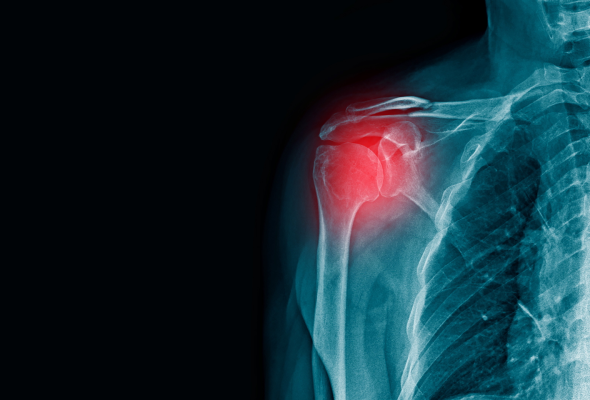Bone Tuberculosis: Symptoms, Causes, Diagnosis and Treatment
Author : CARE Hospitals | Published On : 28 Mar 2024
Bone tuberculosis, a form of extrapulmonary tuberculosis, is a rare but potentially debilitating condition caused by the bacterium Mycobacterium tuberculosis. When someone with tuberculosis coughs, sneezes, or sings, the disease can spread. This may put germ-carrying microscopic droplets into the air. The bacteria can then enter into lungs of other individuals who breathe in these droplets. In case of individuals who live in close quarters or large groups, tuberculosis spreads fast.
Though it may spread to any region of the body, tuberculosis usually attacks the lungs. In most cases, tuberculosis can be avoided through early treatment and cure if therapy starts soon. However, tuberculosis (TB) is capable of being a fatal disease.

Causes of Bone Tuberculosis
When tuberculosis enters your body and spreads outside of your lungs, you might develop bone TB. Usually, the airborne form of tuberculosis is transmitted from person to person. Once you have TB, it can enter your bloodstream and enter your joints, bones, or lymph nodes through your lungs or lymph nodes.
There are several bone tb causes, including:
- The most common source of bone tuberculosis is the spread of the tuberculosis bacteria from the lungs.
- The bacterium can disseminate through the bloodstream, reaching bones and joints.
- In some cases, the infection may extend directly from nearby structures, such as lymph nodes, to bones.
- Bone tuberculosis can also result from the direct extension of infection from adjacent tissues, like the spine or soft tissues surrounding the bones.
Symptoms of Bone Tuberculosis
Recognizing bone tb symptoms is crucial for early detection and intervention. Usually occurring over months or years, bone TB symptoms develop gradually. Possible bone tuberculosis signs and symptoms include:
- Pain: One of the most prevalent bone tuberculosis symptoms in the afflicted bone or joint is persistent and recurrent chronic pain. With time, the pain usually becomes worse.
- Swelling and Deformities: Swelling around the affected area, accompanied by visible deformities, are the signs of bone tb. Deformities are more common in weight-bearing bones, such as the spine and hips.
- Limited Range of Motion: Reduced mobility and stiffness in the joints can occur, affecting the ability to perform regular activities.
- Systemic Symptoms: Fever, night sweats, and unintended weight loss may accompany bone tuberculosis, reflecting the systemic nature of the disease.
- Weight Loss: The primary reason for a drop in body weight is a persistent sickness, such as TB.
- Tenderness: The patient may experience discomfort from joint or bone pressure, and when they try to touch the affected area, it feels tender.
- Neurological Symptoms (Spinal TB): In cases involving the spine, neurological symptoms like weakness, numbness, or tingling may occur due to compression of the spinal cord.
- Age: Young people and children, especially those under sixteen, are at risk of developing bone tuberculosis. But it can also impact the elderly.
Diagnosis of Bone Tuberculosis
Timely and accurate diagnosis is crucial for effective management of bone tuberculosis. Healthcare professionals employ a combination of clinical evaluation, imaging studies, and laboratory tests for diagnosis, including:
- Clinical Evaluation: A medical professional will do a thorough clinical history and physical examination. During this evaluation, they recognise indications of TB infection, such as swelling, joint discomfort, and so on.
- Imaging Studies: X-rays, CT scans, and MRI are essential for visualizing bone abnormalities, including lesions, deformities, and joint involvement. MRI is particularly useful for assessing soft tissue involvement.
- Biopsy: A biopsy of the affected bone or joint is often necessary to confirm the presence of Mycobacterium tuberculosis. Tissue samples are examined under a microscope, and cultures are conducted to isolate the bacteria.
- Mantoux Test: A positive Mantoux test (tuberculin skin test) can support the suspicion of tuberculosis.
- Polymerase Chain Reaction (PCR) Test: It is also possible to use PCR to test the samples that your doctor collects. This test increases the mycobacterium's genetic makeup and aids in the detection of infection in trace quantities of fluid.
- Blood Test: These tests look for active infections by measuring C-reactive protein and ESR.
Treatment of Bone Tuberculosis
Bone tb treatment involves a multidrug antitubercular regimen and, in some cases, surgical intervention. The key components of the bone tuberculosis cure plan include:
- Antitubercular Medications: Antibiotics are mainly used for bone tuberculosis treatment, but the type of antibiotics used depends on the type of bacteria that is present, since some strains of the bacteria that cause tuberculosis are resistant to certain antibiotics. To ascertain the best course of treatment, drug susceptibility testing is done. Depending on the medications utilized, the medication treatment for bone TB usually consists of a set frequency and dose plan that lasts six to twelve months.
- Surgery: Surgical intervention may be necessary in cases of extensive bone destruction, spinal deformities, or the presence of abscesses. Procedures such as debridement, spinal fusion, or joint replacement may be performed.
- Supportive Therapy: Pain management, physical therapy, and nutritional support play a vital role in the overall management of bone tuberculosis. Adequate rest and rehabilitation are essential components of the treatment plan.
Conclusion
Bone tuberculosis, though relatively rare, poses a significant health threat due to its potential for causing long-term disability and complications. Awareness of the causes and symptoms is crucial for early detection and intervention. Several symptoms, including pain, edema, joint abnormalities, and reduced mobility, may result from it. To stop the disease's progression and lower the chance of irreversible joint damage, early identification and bone tb symptoms treatment are essential. Get medical help as soon as possible if you encounter any symptoms.
